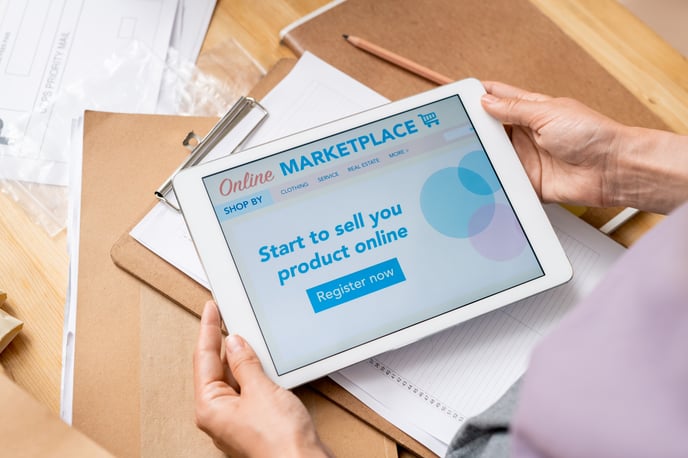Connection to E-Procurement, Marketplaces and E-Shops
E-procurement has become a common practice in large corporations, but it is also questionable due to the enormous required effort to connect individual interfaces and define delivery conditions. Such bilateral connections are common in the industrial sector to be able to automatically reorder products for production.
Further E-procurement platforms are used to electronically combine purchasing requirements of individual companies to enable the bidding company to submit an automated electronic bid (Heinemann, 2018, p. 156, p. 157).
Marketplace
A marketplace is traffic of data, information and goods in which numerous suppliers meet numerous customers. In terms of sales strength, it is currently the most important model in B2B sales (Heinemann, 2018, p. 156). A study conducted in Germany by Ibi Research in 2017 showed that 26% of the companies surveyed use a B2B marketplace for their B2B sales (Wittmann and Listl, 2017, p. 12). The biggest advantage of marketplaces is the high level of price transparency and the potential cost savings resulting from using them. Neither the seller nor the buyer operates the marketplace, but a third-party provider, a so-called intermediary, does (e.g., Mercato, Simple System, etc.) (Heinemann, 2018, p. 157).
Based on experiences in Germany, SME businesses are mostly too small for an individual connection due to the efforts for individual interfaces and negotiations regarding the terms of cooperation. As a result, many B2B providers have already switched to an E-shop (Heinemann, 2018, p. 23).
E-Shops
The biggest advantage of an own E-shop compared to a marketplace is the direct customer relationship, which can still be maintained. In contrast to a marketplace, you know who your customer is and you do not have to pay any intermediary fees. The transaction costs in processing are also reduced. Another indication that this trend may continue is the inclusion of the major online pure player in the B2B online business. Amazon has initiated a trend here called consumerization. A B2B customer on Amazon Supply (Amazon's business platform in the USA) is also a B2C customer on Amazon - a fusion not only in use but also in functionalities. From this perspective, even today's B2C customers of Amazon can relatively easily convert their existing customer relationship into a B2B customer relationship. This is done through awareness or services, e.g., supplier credits (Heinemann, 2018, p. 23). Consumerization provides B2B with a similar language to what B2C customers are already used to.
This Amazon business model has already arrived in Switzerland: 18% of respondents to the ibi Research study stated that they make purchases via marketplace platforms such as Amazon. However, according to the study, the highest proportion of B2B online sales is made via standard or self-developed store systems. According to the study, the store system share of sales is already over 50% of all options used in B2B e-commerce (Wittmann and Listl, 2017, p. 12), which contradicts the statement in the marketplace chapter.

Comments